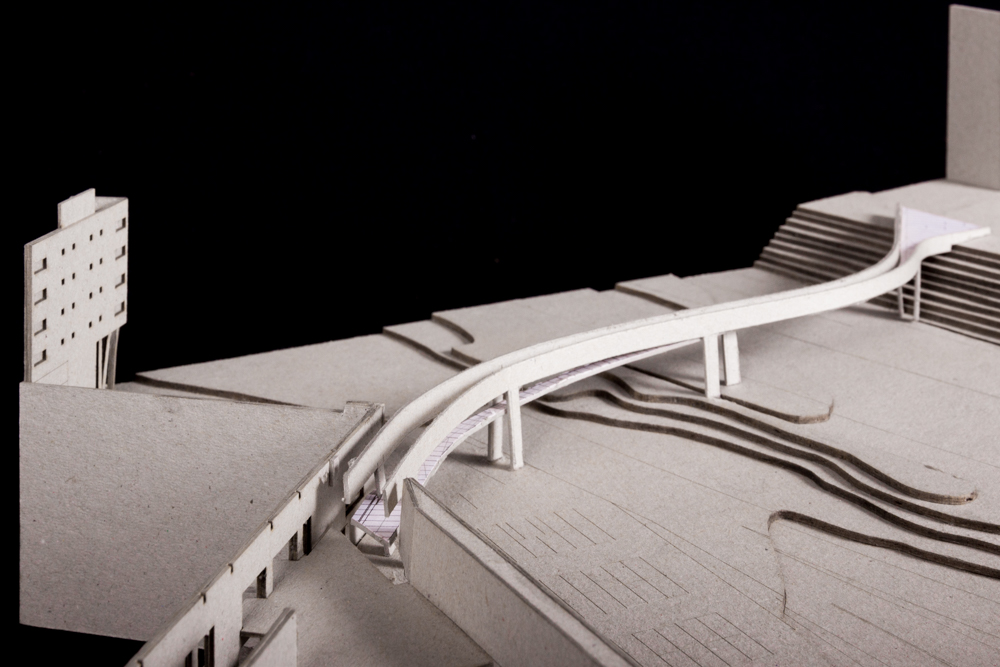The very essence of a bridge, or a footbridge, is to connect two points separated by uneven ground or by an element that makes it impossible to make an unraised path. When the walkway is intended for pedestrians, who are extremely vulnerable to traffic, the environment absolutely determines the best solution to overcome the hurdle in question. This is precisely what Leve Projects had to deal with in two different projects. The first, in Barberà del Vallès, was to join the city centre and the future expansion of the Baricentro shopping centre over the AP7 motorway. The second, in Sant Cugat del Vallès, was designed to connect a new shopping and office space and the Hospital General railway station, crossing over both the suburban (FGC) and local (Renfe) railway tracks.
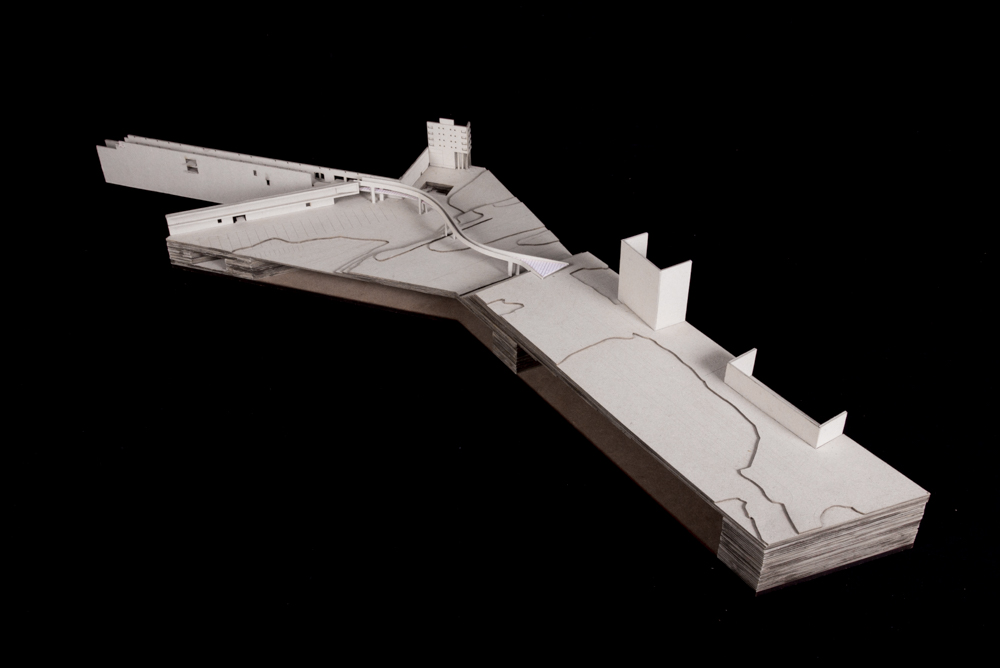
model of Barbarà
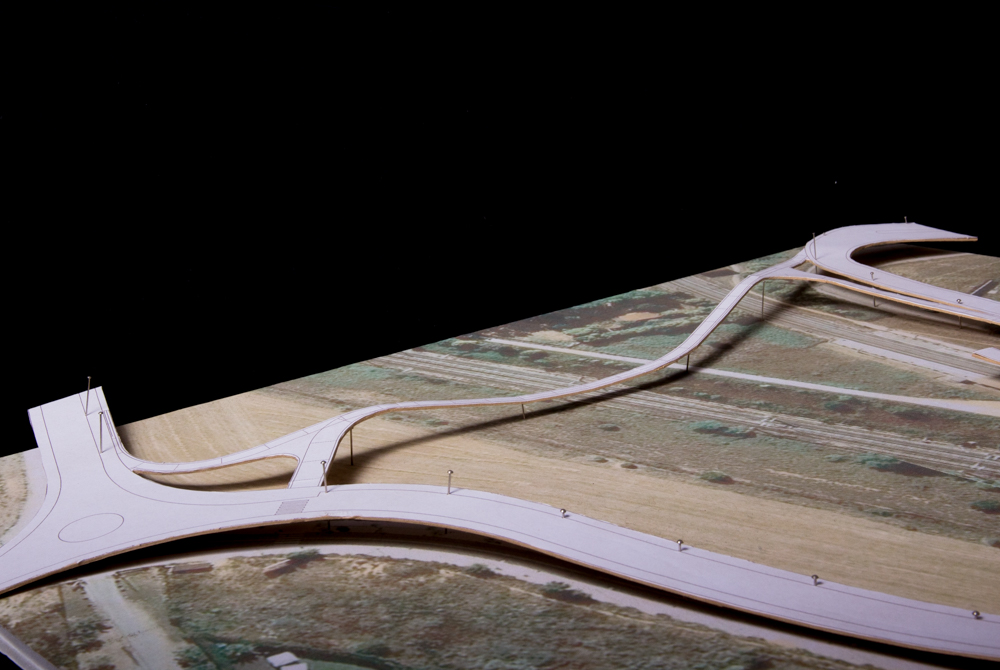
Detail of the model of Sant Cugat
Although, in essence, both cases are a matter of linking point A to point B, the surrounding conditions have led to very different solutions. In Barberà del Vallès, the bridge has to cross over a motorway with a series of junctions and a side road, as well as dealing with uneven ground, as the town is higher than the shopping centre. This led to a rigid construction, with beams acting as handrails, which also shield pedestrians from the noise and view of the road. In fact, as the project has been designed, when walking along the bridge pedestrians see the horizon and the mountains in the background. It is also symbolically a continuation of the road as the shopping centre is left behind, even though you don’t see the road until you get to the Baricentro parking lot.
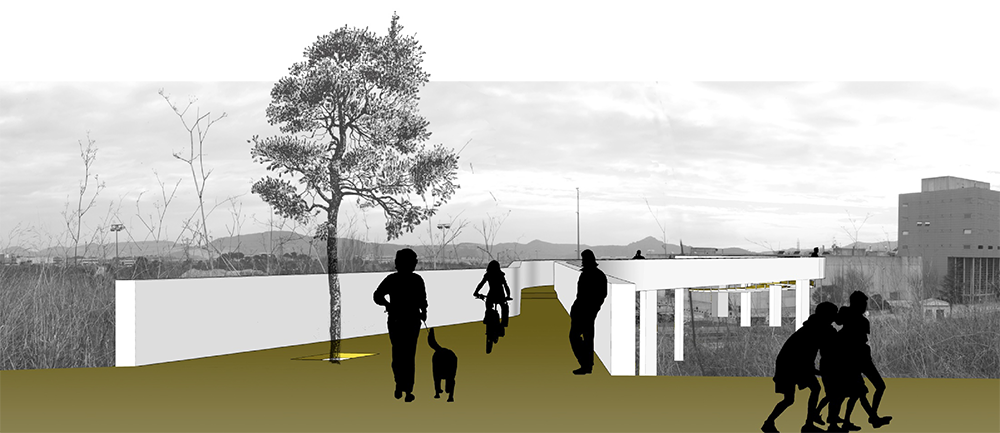
Study of Barberà bridge. Views and circulation.
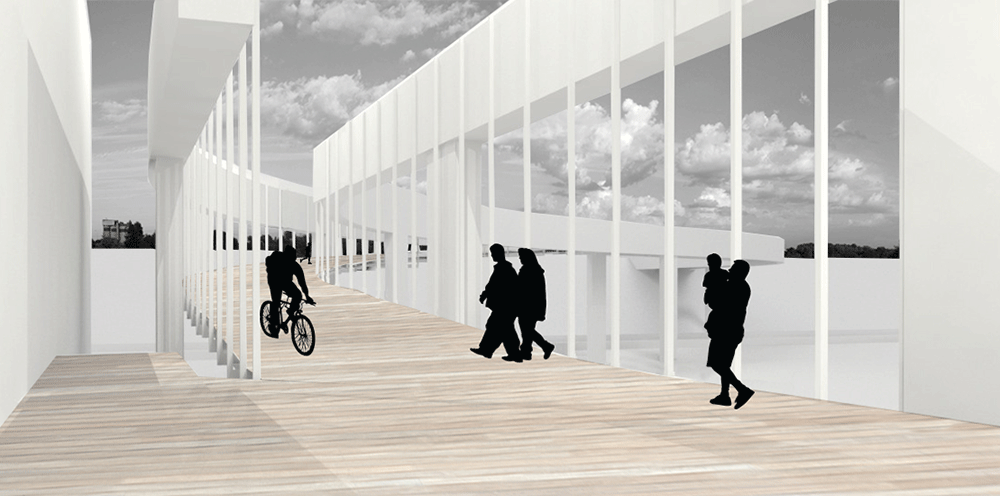
Study of Barberà bridge. Rail which cut off with the noise. Photomontage.
In Sant Cugat del Vallès, even though the Renfe line is underground, the land is still quite natural or planted with crops. Plus, the bridge only has to cross over two sets of railroad tracks, which don’t have as big an impact as the motorway in Barberà. For this reason, the bridge chosen works more like a raised walkway with small pillars and an arch to cross over the Renfe rails, which are in a ditch below ground level. The road plays with gentle ascents and descents and a lattice-like railing that allows pedestrians to see the surrounding landscape from a higher vantage point above the tracks, which has also been used to create shaded areas where you can stop for a moment to relax and/or enjoy the scenery.
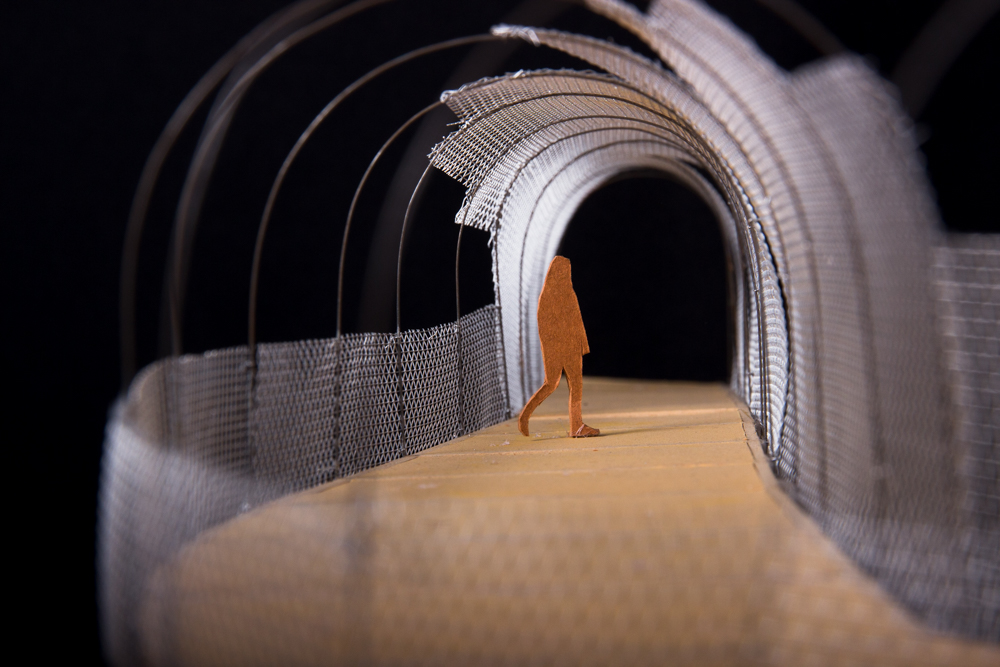
From within the bridge
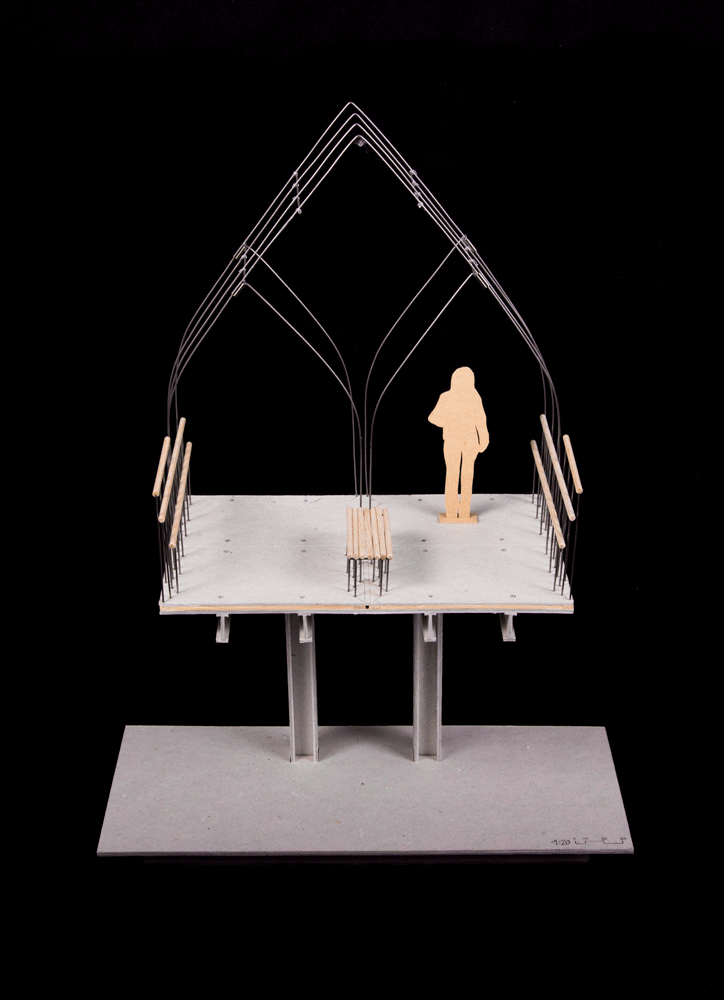
Detail of the bridge
 These two projects clearly show how each environment requires a different solution. The bridge for Baricentro would not make sense in Sant Cugat, and vice versa. If you want to promote public transport in conjunction with walking or cycling to work, you have to think about people’s feelings and needs, to make sure they feel safe and give them a more relaxed ride, though not over-protected by a rigid structure. Likewise, major engineering or superfluous design don’t work in either case. The problem must be studied to be solved with safety in mind and not having pedestrians work harder than necessary.
These two projects clearly show how each environment requires a different solution. The bridge for Baricentro would not make sense in Sant Cugat, and vice versa. If you want to promote public transport in conjunction with walking or cycling to work, you have to think about people’s feelings and needs, to make sure they feel safe and give them a more relaxed ride, though not over-protected by a rigid structure. Likewise, major engineering or superfluous design don’t work in either case. The problem must be studied to be solved with safety in mind and not having pedestrians work harder than necessary.


